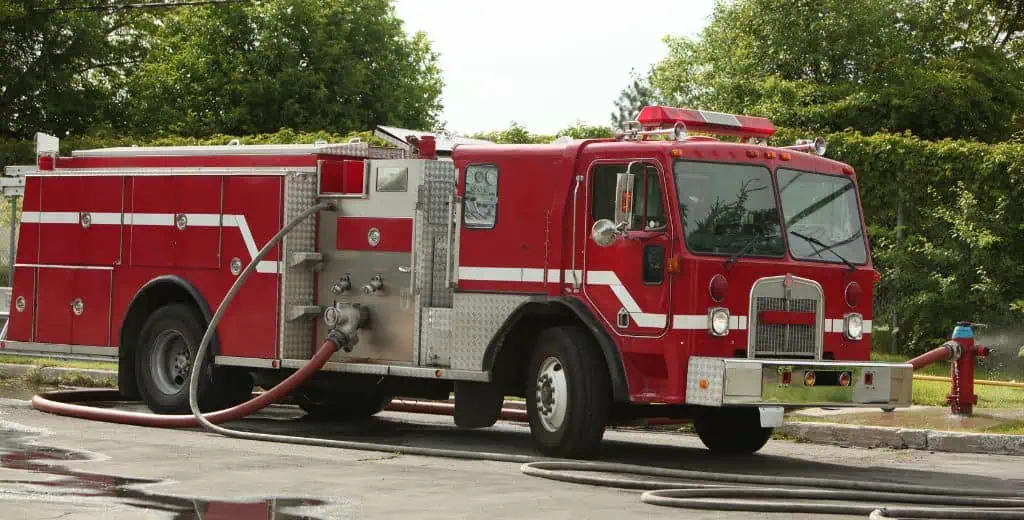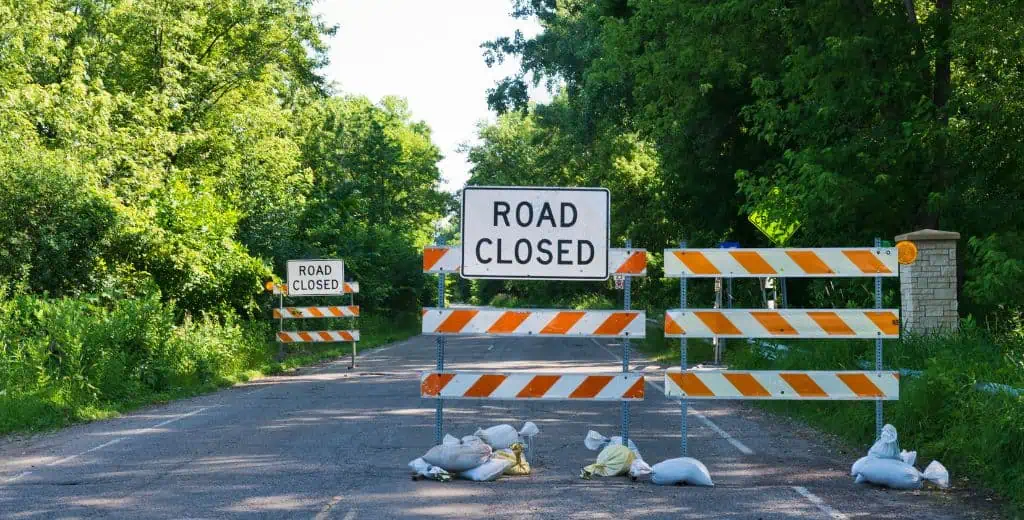What Are Ingress and Egress?
REtipster does not provide legal advice. The information in this article can be impacted by many unique variables. Always consult with a qualified legal professional before taking action.
Shortcuts: Ingress and Egress
Understanding Ingress and Egress
Ingress and egress rights form the foundation of property access in real estate. These rights guarantee owners, tenants, and visitors can legally enter and exit a property through designated points like driveways, walkways, or shared access roads.
In simple terms:
- Ingress is the right and ability to enter a property.
- Egress is the right and ability to exit a property.
All in all, ingress and egress together represent access rights, or the legal right to move in and out of a property.
Legally speaking, access rights extend beyond simple entry and exit. These rights include easements for crossing neighboring properties when direct road access is unavailable, emergency vehicle access requirements, maintenance obligations, and compliance with local building codes.
For commercial properties, these rights also encompass delivery access, customer parking entrances, and service roads, which are critical components for business operations.
Access Rights and Property Value
Access rights impact a property’s highest and best use and thus have a significant impact on property values. After all, if you can’t enter or exit the property through regular means or you have to cross a neighbor’s lot to do so, the property is undesirable to begin with.
For residential properties, optimal access rights involve direct access to public rights-of-way, typically through complete and unrestricted ownership.
Meanwhile, for commercial properties, lenders typically require Phase I environmental assessments for commercial properties, which include evaluation of access rights. Title insurance policies specifically address access through ALTA 17 endorsements, which insure legal and physical access to the property. Without these endorsements, many lenders won’t fund commercial loans.
Common Problems With Ingress and Egress
Property owners face several recurring issues with access rights. A common problem occurs when new owners block traditional access paths, unaware of existing easements. Another issue arises when multiple property owners share maintenance costs for a private road but disagree about payment amounts or repair timing.
In such cases, property owners often use easements. Easements are legal agreements that let someone cross another person’s property.
These agreements come in several forms:
- Express easements are written into property deeds and spell out exact access rights.
- Implied easements arise from necessity, such as when a property has no other way to reach a public road.
- Prescriptive easements develop when someone uses another’s property for access over many years without permission—usually 20 years in most states.
Note that an easement “runs with the land,” meaning it stays attached to the property even after transferring its ownership.
Easement Disputes
However, even easements can be disputed. For example, an easement created decades ago for residential access might not adequately address modern delivery truck traffic or increased vehicle size. Property owners might disagree about widening driveways or adding parking areas along easement routes. Changes in property use, like converting a house to a business, can also strain existing easement agreements.
Courts aim to preserve established access rights while ensuring fair treatment for all property owners. They look at factors like historic use patterns, property values, hardship to each owner, and public safety needs. A court might require neighbors to share maintenance costs based on how much each one uses a shared driveway. In cases where access becomes blocked, courts can order removal of barriers and award damages for lost access.
What Happens If Easements Are Unclear?
When easement agreements lack clear terms, property owners often face uncertainty about their rights and responsibilities. Some key issues include:
- Who maintains drainage systems along shared access roads?
- Can easement holders grant access rights to others?
- How to handle parking along easement routes?
- What happens when natural disasters damage access paths?
- Are security gates or cameras allowed?
These problems highlight why detailed, written easement agreements matter. Good agreements address future changes in property use, specify maintenance standards, and include dispute resolution procedures. They also establish clear methods for sharing costs and making decisions about improvements to shared access areas.
Winning Access Disputes
To win an access dispute in court, you need solid proof. This includes:
- The original documents granting access rights.
- Records showing how the access has been used and maintained.
- Professional surveys showing property lines and access routes.
- Current photos of the access area.
- Expert opinions about how access issues affect property value.
This evidence helps courts make fair decisions about property access rights, especially when dealing with shared driveways or disputed pathways.
Ingress and Egress Standards
Most municipalities have adopted the International Building Code (IBC) standards for access. These require:
- Minimum 20-foot-wide fire apparatus access roads.
- 13.5-foot vertical clearance.
- Maximum 150-foot distance from fire access roads to all portions of buildings.
- Turnaround space for vehicles over 30 feet long.
- All-weather driving surfaces capable of supporting 75,000 pounds.
Access Requirements by Property Type
Single-family properties have the simplest standards but still must meet minimum requirements. Residential driveways need 10- to 14-foot widths for emergency access, maximum 15% grades for fire apparatus access, and clear zones extending at least 2 feet on each side of the driving surface.
Meanwhile, multi-family properties face unique requirements based on unit count. Properties with more than 100 units need two separate access points at least 150 feet apart. Garden-style apartments require at least 20-foot-wide fire lanes around buildings, while mid-rise structures require that fire apparatus access roads must generally extend to within 150 feet of all portions of the first-story exterior walls.
Commercial properties must meet even stricter access standards under NFPA 1 (National Fire Protection Association) guidelines.
Maintenance and Legal Obligations
Property owners bear specific maintenance duties for access points. These include:
- Annual inspection of fire lanes and access gates
- Regular testing of emergency access systems
- Maintaining a minimum 13.5-foot vertical clearance from tree branches, as per NFPA guidelines.
- Keeping access surfaces free of damage.
- In some jurisdictions, like Seattle, this includes snow removal and keeping sidewalks adjacent to their property free of obstructions.
Failure to maintain proper access can trigger municipal code violations. For example, Pennsylvania’s Municipal Code and Ordinance Compliance Act allows for fines of not less than $1,000 and not more than $10,000 for failure to correct code violations. However, these fine amounts vary by jurisdiction and the severity of the violation.
Impact on Real Estate Development
The way you can access a property directly affects what you can build on it. Therefore, local governments limit building size based on how many ways people can get in and out.
A property with only one entrance might be limited to a much smaller building than an identical property with multiple access points. In many cases, having just one access point can force you to build a 25% to 40% smaller building than you could with two or more entrances.
Before approving any new development, cities require a traffic study. This study asks:
- How many cars can safely enter and exit the property?
- How far back might traffic back up during busy hours?
- Can drivers see clearly when entering and leaving?
The study also looks at accident history and how smoothly traffic flows on nearby streets. If the study shows problems, the developer must fix them before building anything.
Frequently Asked Questions: Ingress and Egress
What are flag lot access requirements?
There are no universal flag lot access requirements for its access strip. Some jurisdictions may require something as narrow as 12 feet of width, others over 20 feet.
The “pole” portion does not have any universal length requirements as well. Some jurisdictions may even allow up to 450 feet in length without secondary access. Shared access agreements require recorded maintenance covenants and a minimum of $1 million in liability insurance coverage per owner.
How do seasonal access limitations affect property rights?
Seasonal limitations, such as winter road closures, must be disclosed to buyers. Properties with only seasonal access often require special insurance riders and may face lending restrictions. Access easements must specifically address seasonal maintenance obligations and alternative access routes.
What triggers an access adequacy review?
Changes in use intensity or subdivision of land trigger new access reviews. Properties must also undergo access evaluation when changing occupancy classifications under building codes or when accident history shows access-related safety issues.
References
- PropertyMetrics, “Understanding Ingress and Egress in Real Estate.” https://propertymetrics.com/blog/understanding-ingress-and-egress-in-real-estate/
- CohenMalad, “Taking Access Rights and Altering the Nature of Property Can Have Lasting/Devastating Effects.” https://www.cohenandmalad.com/2017/08/02/eminent-domain-and-access-rights/
- Omega Environmental, “Understanding the Need for a Phase 1 Environmental Site Assessment in Property Transactions.” https://www.omegaenv.com/environmental-consulting-firm-blog/a-phase-1-environmental-site-assessment-esa-in-property-transactions/
- Stewart Title, “Insuring Properties with Access Issues.” https://www.stewart.com/en/insights/insuring-properties-with-access-issues
- Cornell Law School, “Easement by prescription.” https://www.law.cornell.edu/wex/easement_by_prescription
- City of Mobile, Alabama, “MOBILE FIRE – RESCUE DEPARTMENT FIRE CODE ADMINISTRATION.” https://www.cityofmobile.org/fire/uploads/access-road-requirements.pdf
- Forest Grove, OR. “§ 17.8.120 MINIMUM ACCESS REQUIREMENTS FOR RESIDENTIAL USES.” https://codelibrary.amlegal.com/codes/forestgrove/latest/forestgrovedev_or/0-0-0-3428
- Boulder County, CO, “Driveway Access for Emergency Vehicles.” https://assets.bouldercounty.gov/wp-content/uploads/2017/03/w04-emergency-vehicles-access.pdf
- 2021 International Fire Code, “D106.1 Projects having more than 100 dwelling units.” https://codes.iccsafe.org/s/IFC2021P2/appendix-d-fire-apparatus-access-roads/IFC2021P2-Pt07-AppxD-SecD106.1
- National Fire Protection Association, “Fire Apparatus Access Roads.” https://www.nfpa.org/news-blogs-and-articles/blogs/2021/01/08/fire-apparatus-access-roads
- 2021 International Fire Code, “Appendix D: Fire Apparatus Access Roads.” https://codes.iccsafe.org/content/IFC2021P1/appendix-d-fire-apparatus-access-roads
- City of Seattle, “Property Owners’ Responsibilities.” https://www.seattle.gov/transportation/projects-and-programs/programs/maintenance-and-paving/property-owners-responsibilities
- Pennsylvania Association of Realtors, “About the Municipal Code and Ordinance Compliance Act.” https://www.parealtors.org/resources/municipal-code-and-ordinance-compliance-act/
- Encode Plus, Zoning and Land Development Regulations.” https://online.encodeplus.com/regs/charlestoncounty-sc/doc-viewer.aspx?secid=2647#secid-2647
- Bryan/College Station Metropolitan Planning Organization, “Part One: Model Language for Regional Access Management Standards.” https://bcsmpo.org/DocumentCenter/View/1086/Draft-Regional-Access-Management-Standards








